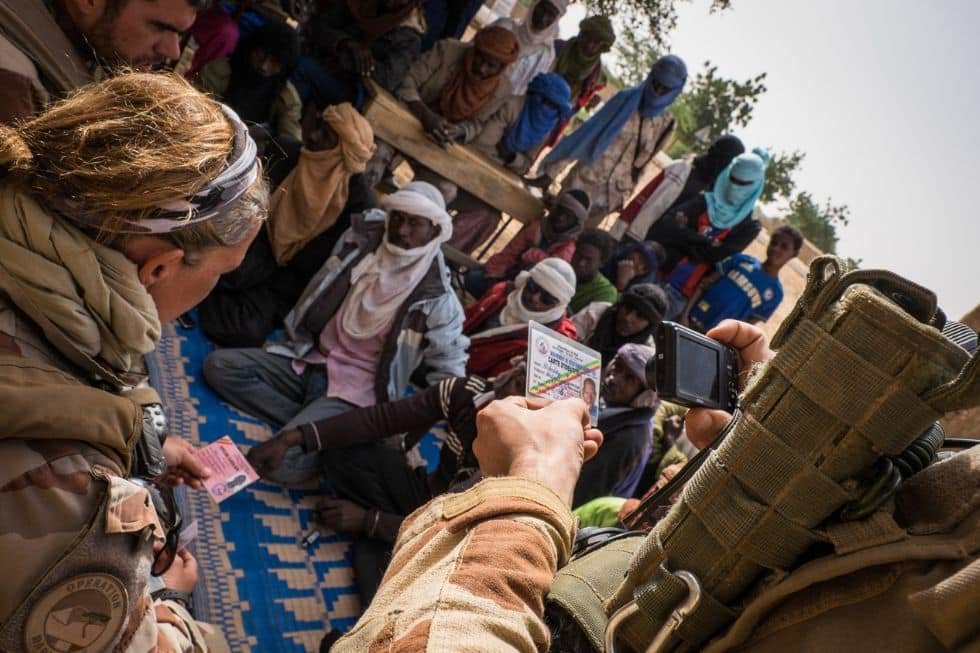The Sahel has endured overlapping crises for decades, but recent developments suggest a significant shift in the region’s security landscape. Jihadist groups are no longer operating as fragmented cells with limited reach. Instead, they are consolidating power, embedding themselves in local conflicts and using the region’s persistent political vacuums to entrench their presence. What were once viewed as isolated or symbolic attacks are increasingly part of more coordinated efforts, as militant groups respond to — and benefit from — the long-standing weaknesses in governance and international engagement.
This transformation has not emerged in isolation. This is not just the result of governance failures, but of historical grievances rooted in colonial legacies, the spread of jihadist ideology through regional conflicts, the repeated failure of external actors to adapt their strategies to local dynamics and of narrow geopolitical interests. The US, turning a blind eye to the security vacuum in Sahel, is making the same mistake it made in Afghanistan.
The colonial echoes
The Sahel region was violently colonized by France in the late 19th and early 20th centuries, significantly shaping its development. The French focused solely on resource extraction and exploitation, neglecting its governance. When they drew the borders of the Sahel, they drew them arbitrarily, dividing ethnic groups across different countries and weakening national cohesion.
After independence in 1960, frustration grew among nomadic and tribal groups as the already limited governance began to fail, marking the start of extremism and rebellion. This rebellion and violent tendencies escalated when the Sahel was hit by famine and drought (especially the 1968-73 drought), and escalated further in the 1980s, with issues such as banditry, kidnapping, extortion and the killing of French citizens.
The beginning of jihad in the Sahel
The Sahel region practiced moderate Sufi Islam, but the North African region soon saw the first signs of jihadi conflict — specifically the outbreak of the Algerian civil war in 1991, when the government canceled elections out of fear that Islamist forces might gain power.
Islamist forces quickly capitalized on growing public disillusionment with the state, leading to the creation of radicalized armed groups. The military’s intervention and subsequent coup escalated the conflict into a civil war, creating a political vacuum that enabled Islamist groups to establish a foothold.
Concurrently, in 1992, Osama Bin Laden relocated to Sudan, where he set up Al-Qaeda’s training camps and business operations. This move signaled Al-Qaeda’s growing interest in the region and its strategic potential. The 1998 bombings of US embassies in Kenya and Tanzania underscored how North and East Africa had become increasingly integrated into Al-Qaeda’s transnational agenda.
By 2007, the Algerian Armed Islamic Group had pledged allegiance to Al-Qaeda and rebranded itself as Al-Qaeda in the Islamic Maghreb (AQIM). From there, AQIM expanded southward into Mali and Niger, using smuggling and banditry to finance its terror activities. This southward shift gained further momentum after the 9/11 attacks, as the US-led war on terror displaced jihadist networks from the Middle East and South Asia, pushing them to seek new bases of operation in regions like the Sahel — where porous borders and unstable governments offered strategic opportunity.
As the mid-2000s approached, a distinct jihadist landscape had begun to take shape in the Sahel, one that would be further reinforced after the fall of Muammar Gaddafi in Libya in 2011.
Expansion of the jihadi landscape
The fall of Gaddafi created a political and security vacuum that Al-Qaeda was quick to exploit, especially in Mali. With the collapse of Gaddafi’s regime, significant stockpiles of weapons spilled into the region.
Among those freed were Tuareg tribal rebels who had served as mercenaries under Gaddafi. These fighters later aligned with AQIM, strengthening Al-Qaeda. Their alliance was further shaped by the Tuaregs’ separatist desire for autonomy in Mali’s Azawad region, sparking a rebellion in 2012 that quickly took on a militant Islamist character.
By April that year, Islamist forces had seized control of key northern cities in Mali, marking a fresh surge in jihadist activity across the region.
Consolidation of the jihadist wave
By 2013, Western governments began acknowledging the growing terrorist threat in the Sahel. France launched Operation Serval to oust jihadist groups from northern Mali. The mission succeeded in dislodging militants from major urban areas — but it pushed them deeper into the countryside and across national borders, allowing them to regroup and destabilize the region more.
France followed this with Operation Barkhane between 2014 and 2022, aimed at regional stabilization. But progress stalled. French troops encountered resistance not just from insurgents, but from local populations with deep-seated resentment linked to France’s colonial legacy. As these military interventions struggled to deliver long-term security, political instability, poverty and governance failures deepened, creating conditions that Islamist groups readily exploited to recruit and radicalize.
A dangerous convergence: jihadist unity and coups
ISIS made its entry into the Sahel in 2015, prompting a breakaway faction from AQIM to pledge allegiance and form the Islamic State in the Greater Sahara (ISGS). Two years later, Al-Qaeda responded by consolidating its presence. AQIM merged with Ansar al-Dine and al-Mourabitoun to form Jama’at Nasr al-Islam wal Muslimin (JNIM), a powerful group that is now the leading force behind jihadist operations in the region.
The political environment further deteriorated from 2020 onwards, as six successful coups swept through the Sahel, weakening already fragile governments. These conditions enabled ISGS and Al-Qaeda to entrench themselves further.
As criminal activities increased, these terror groups adopted banditry with jihadist motives, creating what is called “jihadist banditry”, encouraging criminal groups to adopt jihadist ideologies and migrate into terrorism. This has significantly bolstered Al-Qaeda and ISIS’s presence in the Sahel in recent years.
The consequences have been staggering: in 2023, Sahel accounted for 43% of all terrorism-related deaths worldwide, a number that grew to 51% in 2024. Burkina Faso alone recorded 1,135 fatalities in 2022, making it the world’s most terror-affected country.
Narrow geopolitics and limited attention
Africa has steadily become central to global geopolitics and geoeconomics, particularly due to its reserves of rare earth minerals and gold. Yet, in the Sahel, these resources remain largely untapped, overshadowed by an entrenched security crisis and volatile political environment.
After France’s military withdrawal, the region saw the arrival of Russia’s Wagner Group, a private mercenary or paramilitary force. The Sahel’s military juntas welcomed Wagner for the short-term promise of security support and the political leverage it offered through alignment with Moscow. However, Wagner’s presence has not translated into lasting stability. Its activities have remained largely focused on securing Russian interests and gold mining operations, rather than providing a serious or coordinated response to the region’s security challenges.
Despite the presence of Russian forces and the persistence of jihadist activity, the United States has kept the Sahel at a low strategic priority.
Washington has avoided deeper engagement, citing the absence of a direct or immediate national security threat. But a primary reason is that the US likely considers involvement in African conflicts risky, given its haunting past with the Somali crisis, where it faced one of its biggest failures: Operation Gothic Serpent. But the operation failed due to overconfident and patterned operational planning with a lack of contingency and strong communication on the ground, none of which are unavoidable in future operations.
During the 90s, Sahel did not emerge as a direct threat, and the US focus remained on security issues in East Africa and Al-Qaeda.
However, the Sahel region has gradually become a direct threat to the US after the 2011 Libyan civil war, and the threat increased greatly by 2017, when ISIS cadres in Africa gained strength. The 2017 Tongo Tongo ambush in Niger, where ISGS fighters killed four US Special Forces soldiers, underscored the growing threat to US personnel in the region.
The apprehension was echoed by General Michael Langley, head of US Africa Command, who warned in 2024 that Sahel-based terrorist groups could develop the capacity to strike the US homeland if left unchecked.
While the US did maintain a surveillance and reconnaissance presence in Niger for some time, this was withdrawn in 2024, alongside France’s broader withdrawal. The departure of Western forces, combined with Russia’s limited effectiveness, has left a fragile security landscape in which terror groups are once again finding space to operate.
A recurring blind spot in US counterterrorism
The United States’ counterterrorism strategy has repeatedly failed to anticipate the evolution of jihadist networks, particularly when they have emerged from outside conventional theaters of war.
The 1998 embassy bombings were orchestrated from Afghanistan, exploiting a blind spot in US regional threat assessments; the US grossly underestimated Al-Qaeda’s transnational reach. Similarly, during the Algerian civil war in the 1990s, the alignment between Algerian Islamist factions and Al-Qaeda to form a secret jihadist revolution in Africa went largely unacknowledged by US intelligence, despite clear signs that they were building contacts with the global terror network. In Somalia, the US once again underestimated the regional Islamist force, Al-Itihaad al-Islamiya, while focusing on humanitarian operations. This misjudgment contributed to the emergence of Al-Shabaab, now a dominant Al-Qaeda affiliate in East Africa.
The list doesn’t end here; the US also failed to act when ideological convergence between jihadist groups and narcotics cartels grew in Colombia (a country with which it shares strong security cooperation on narcotics issues), which led to cartel bombings in 1998. A similar nexus now sustains Al-Qaeda’s operations in the Sahel, with JNIM heavily depending on a drug smuggling network.
Yet, Washington’s strategic assessments have continued to downplay this growing narco-terror convergence.
The threat of resurgence is now common; the real danger is that terror groups are acquiring the capabilities necessary for transnational terror attacks. Without a shift in strategic posture — one that moves beyond narrow geopolitical interests and accounts for the full complexity of threats — another major wave of global jihadists may be inevitable.
[Yaamini Gupta edited this piece.]
The views expressed in this article are the author’s own and do not necessarily reflect Fair Observer’s editorial policy.
Support Fair Observer
We rely on your support for our independence, diversity and quality.
For more than 10 years, Fair Observer has been free, fair and independent. No billionaire owns us, no advertisers control us. We are a reader-supported nonprofit. Unlike many other publications, we keep our content free for readers regardless of where they live or whether they can afford to pay. We have no paywalls and no ads.
In the post-truth era of fake news, echo chambers and filter bubbles, we publish a plurality of perspectives from around the world. Anyone can publish with us, but everyone goes through a rigorous editorial process. So, you get fact-checked, well-reasoned content instead of noise.
We publish 2,500+ voices from 90+ countries. We also conduct education and training programs
on subjects ranging from digital media and journalism to writing and critical thinking. This
doesn’t come cheap. Servers, editors, trainers and web developers cost
money.
Please consider supporting us on a regular basis as a recurring donor or a
sustaining member.
Will you support FO’s journalism?
We rely on your support for our independence, diversity and quality.












Comment